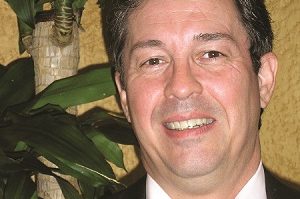The author, WA2EWT, is a broadcast consultant in St. Petersburg, Fla.
The FCC has formally approved a “green” technique for AM radio stations that want to reduce their operating costs. The technique is known as Modulation Dependent Carrier Level, or MDCL. Public notice was issued on Sept. 13, extending what had been an experimental program in Alaska to all U.S. AM stations.
International broadcasters have been familiar with the concept for many years under the name of Dynamic Carrier Control. The purpose of this article is to explain to U.S. AM stations a technology already familiar to their colleagues abroad.
With escalating power bills, controlling electricity usage is especially important to the international broadcaster. Dynamic Carrier Control, offering significant savings in power bills for high-power broadcast transmitters, was proposed more than 75 years ago. It took the power of the integrated circuit digital signal processor (DSP) and pulse-step modulation (PSM) to bring it to fruition.

Power savings are impressive when DCC is added to 100, 250 and 500 kW transmitters.
Today, all modern super-power (output power greater than or equal to 100 kW) shortwave, and most medium-wave (AM band) transmitters, incorporate DCC capability. Total power consumption typically is reduced by 15 to 30 percent, and the effects are virtually undetectable to the listening audience.
As a benchmark, the average household in the U.S. consumes about 11,000 kilowatt-hours of electricity each year. Assuming an average power savings of 25 percent with DCC, a single modern 250 kW transmitter, operated 12 hours per day, saves 342,000 kilowatt-hours per year, or the equivalent of powering 30 average homes.
If we multiply this by the over 1,000 shortwave, super-power transmitters positioned around the world, we save enough electrical energy to power over 30,000 homes, a small city.

The AM modulator impresses the program onto the high-frequency radio wave.
BACKGROUND ON AMPLITUDE MODULATION
Amplitude modulation occurs when a voice or music signal’s varying voltage (fm) is applied to a carrier frequency (fC). The resultant AM signal consists of the carrier frequency, plus upper and lower sidebands, known as double sideband amplitude modulation (DSB-AM), more commonly referred to as plain AM.
When a carrier is amplitude-modulated, only one-third of the total RF power is contained in the information-bearing sidebands. The other two-thirds of the RF output power is contained in the carrier, which does not contribute to the transfer of information. The intelligence is in the sidebands, and the carrier is aptly named for its purpose of merely carrying the modulation.
With a complex modulating signal, such as voice or music, the sidebands generally contain only 20 to 25 percent of the overall signal power; thus the carrier consumes 75 to 80 percent of the total output power, making AM a very inefficient mode of transmission.
This raises the question: “How can the transmitted waveform be modified to reduce power without reducing received quality in simple AM receivers?”
WHAT DOES THE CARRIER DO FOR US?
The carrier in any AM system has two functions: to translate the information signal to a higher frequency that is suitable for transmission and to suppress static noise and interference during silent intervals in the program. When the amplitude of the audio signal is significantly less than that required for 100 percent modulation, it is possible to save on the power consumption of the transmitter by reducing the amplitude of the carrier, without affecting demodulation of the sidebands. Power savings of 15 to 30 percent (depending on program material) are feasible if carrier power is reduced 3 to 6 dB (carrier reduced one-half to one-fourth) of the rated output power when modulation is low, with little or no effect on reception of the signal. DCC is designed to keep the carrier at sufficient amplitude to achieve 100 percent modulation, even during the low-level portions of the audio program.
WHAT IS DCC?

The spectrum of AM signal shows the wasteful carrier power compared to the information-bearing sideband power.
Traditionally, AM systems have provided a fixed carrier level and applied modulation up to 100 percent (or +125 percent positive). Using DCC, during periods of low or no modulation, power consumption can be significantly lowered by automatically reducing the carrier level and restoring the carrier level when modulation later increases.
The transmitter is adjusted for full carrier power output when the audio input appears at 100 percent modulation. If the audio input level falls, the carrier level will dynamically adjust itself to maintain modulation at 100 percent. If modulation is totally removed, the carrier level will fall to a pre-selected minimum level (–3 dB to –6 dB). Typically a front-panel switch or remote control offers selectable levels and types (different transfer curves) of DCC. With a typical 0.1 ms attack and 200 ms release time, DCC retains the ability to modulate to positive 125 percent as we do now. At +125 percent modulation, the carrier remains at the same level corresponding to 100 percent modulation.
ORIGIN OF DCC
This amplitude modulation energy-saving mode was devised in the late 1930s. DCC was not implemented in transmitter designs until the 1980s, because of the complexities of the control circuitry. If we journey back in time to the 1930s to the village of Gliesmarode in Germany, we find the first trace of DCC with Professor Pungs, who was involved in the development of broadcasting technology. His system was known as “HAPUG” Modulationsverfahren, incorporating the last name of each of the three inventors: Harbich, Pungs and Gerth. This system never made it beyond the experimental stage, due to a lack of computing and processing technology.
PULSE STEP MODULATION

The transfer function between the program audio and the actual level of the carrier has evolved to a curve that reduces the carrier power by a factor of four in the mid-volume range, but retains half-power at low audio moments.
The advent of PSM in the 1980s and DSPs in the 1990s allowed the implementation of DCC in all modern, high-power transmitters today. Using signal processing, we can readily break the modulation voltage waveform into a large number of steps. These small increments are used to turn a series of switches on or off. Thus modulation losses are now reduced to very low switching losses, increasing the efficiency of the modulator itself to better than 95 percent.
The modulator typically consists of 48 series-connected modules, mimicking the sampling levels, which are switched into and out of operation to superimpose high-level audio onto the high-voltage DC anode (plate). The switching is accomplished with insulated gate bipolar transistors (IGBTs). A low-pass filter follows the series-connected modules, which removes the switching signals and allows the DC and audio signals to pass to the RF amplifier. To further refine the linearity, each power supply step is pulse-width modulated, creating a smooth transition from one step to the next.
PROGRAMMING TYPE AFFECTS POWER SAVINGS
As might be expected, actual power saving over that of non-DCC usage is highly affected by audio program content, with talk programs giving more power-saving than most music programming. Even the short blank spaces between spoken words allow the carrier to be reduced in conjunction with the decrease in modulation power.
Popular music programming dwells longer at modulation peaks, as evidenced by the higher degree of modulation index. Audio processing, which artificially increases the average level of modulation, tends to reduce power savings and increases the total power consumption. Tests using processed music programs consistently produced a power saving of 18 percent, whereas talk programs produced power-savings in excess of 22 percent.
DOES DCC AFFECT THE LISTENERS?
In AM transmission systems, the signal-to-noise ratio (SNR) is largely determined by sideband power, not by carrier power. Thus, if an AM transmitter is modulated at 50 percent, a listener will have to turn the volume up 6 dB (x4) to get the same loudness as a transmitter modulated at 100 percent, consequently bringing up the background noise level by the same amount. If the carrier level of the same transmitter is lowered to obtain 100 percent modulation, no change in sideband power will occur. A receiver’s automatic gain control (AGC) circuitry will bring the volume up much as a volume control does, and background static noise will also increase by the same amount. Thus the SNR remains constant.

The advent of the digital signal processor (DSP) and the solid-state pulse-step modulator (PSM) have allowed DCC to emerge as a ‘green’ technology.
When folks seriously discuss the quality of the received signal over audio, they are most likely talking about local AM or FM, where small imperfections are readily noticed. The quality of audio over shortwave or international medium-wave is inherently low, due to atmospherics, fading and noise. Laboratory tests on subjective listening quality using DCC, even with co-channel interference, showed no degradation.
Today, with so many Web-controlled, remote monitoring receivers, it is easy for a broadcaster to access their signal audio via the Internet. This allows the broadcaster to monitor their signal and make their own assessment of DCC under real-world propagation effects when transmitting to remote areas on shortwave. DCC tends to have little effect on listener perception because of slow receiver AGC. Experience has shown that when running a transmitter with DCC, response time is best set to fast attack/slow decay (0.1 ms attack / 200 ms release) and carrier suppression, with no modulation, is set to –6 dB for first-hop targets and –3 dB for third-hop targets.
HOW DOES DCC AFFECT THE TRANSMITTER?
DCC extends the life of transmitter components because the transmitter operates below its design capability. One first notices that the power amplifier (PA) current meter now starts to wiggle with DCC energized. PA current will decrease with low-level audio as the carrier level is dynamically in accordance with the average modulation. Without DCC, the majority of PA current was needed just to produce the large constant-amplitude carrier power.
This variable power-line loading can cause audio modulation on the AC mains if the power lines are exceptionally long to the broadcast station. This is especially true at large transmitting centers, where two or more transmitters are simultaneously broadcasting over different bands, but using the same audio program. When powered by diesel generators, feedback control circuitry in the generators must be modified to handle these increased load swings on the AC power line.
WHO OFFERS DCC?
DCC’s effectiveness and acceptance by broadcasters is indicated by the fact that all of the super-power shortwave transmitter manufacturers — Continental Electronics in Dallas, RIZ-Transmitters in Croatia, Thomson Broadcast & Multimedia in Switzerland and Nautel in U.S./Canada — offer it as built-in or optional. Nautel has long offered DCC on its NX series of high-power medium-wave models. Harris Corp. offers DCC in its line of high-power AM transmitters.
The addition of DCC can pay for itself in as little as a few months, based on the broadcast power level and the price of oil. Transmitters more than 30 years old evidenced an overall efficiency of only 70 percent. With the use of switch-mode Class D and pulse-step modulation, the overall (AC power-to-RF power) efficiency has improved to nearly 80 percent for high-power shortwave and nearly 90 percent for high-power medium-wave transmitters.
FOLLOW THE MONEY TRAIL
DCC’s appearance can be linked to NATO nations trying to save energy as a result of the ripple effects of OPEC-related oil supply crises. Eastern European manufacturers of shortwave transmitters never adopted DCC because Russia, in particular, had no energy crises due to its abundant supply of oil.
International broadcasters are indeed interested in “going green,” and even more so in the future as power bills continue to esculate. Not only do all the manufacturers of high-power transmitters offer DCC, but all the broadcasters use it to help contain expenses. DCC was pioneered by the broadcasting giant British Broadcasting Corp. (BBC) and AEG Telefunken in the late 1980s.
As the cost of electricity steadily increased, others such as Voice of America (VOA), Trans World Radio (TWR), HCJB (Voice of the Andes), Radio France Internationale (RFI), Deutsche Welle (DW), Radio Canada International (RCI), Far East Broadcasting Co. (FEBC), Australian Broadcasting Corp. (ABC Radio Australia), Radio New Zealand (RNZ) and Radio Netherlands Worldwide (RNW) quickly joined the fray. As a simple matter of economics, it is to be expected other broadcasters will add to the numbers, as they are able to make the switch.
In April 2011, the FCC authorized the use of DCC on non-commercial AM stations in Alaska as long as notification was given to the commission. The high cost of electricity in the state was a factor in the decision to allow stations to use DCC experimentally.Power reductions of 30 to 35 percent were reported, with no deterioration of received sound and no complaints about reception from listeners.
The experimental operation appears to have been a success, confirmed by the recent FCC action to allow DCC for all U.S. AM stations.
Comment on this or any other story to [email protected]







